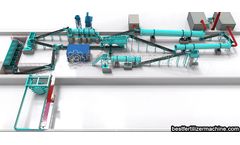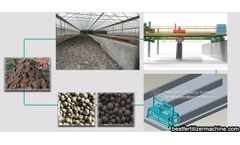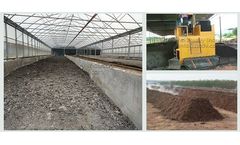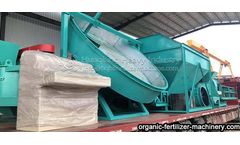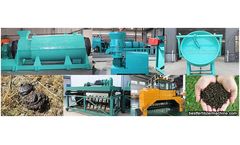Aerobic Composting Articles & Analysis
12 articles found
Composting is mainly divided into aerobic composting and anaerobic composting, which is mainly aerobic composting at present. ...
The manure is collected and mixed with hay and rotten silage to make compost and let it ferment. In the process of fermentation, compost turning machine is used to make the manure fully ferment. Modern aerobic composting is a method that uses composting equipment and fermentation bacteria to stabilize and ...
Aerobic composting technology is an important technical means for the disposal of organic waste, especially suitable for the realization of fertilizer and substrate of agricultural solid waste. For industrialized processing of organic fertilizer, compost turning machine is usually used to ensure the smooth progress of aerobic ...
As the core equipment of aerobic dynamic composting, the organic fertilizer turning machine develops rapidly in the fertilizer equipment family. Fermentation compost turner is a kind of agricultural machine, instead of traditional tools such as manual, forklift and so on. ...
Below is the photos of the delivery site It is more suitable to produce organic manure from livestock and poultry manure by aerobic composting. The traditional composting fermentation of livestock and poultry manure is mainly natural fermentation, which has many disadvantages, such as long cycle, incomplete fermentation, high pollution and ...
The technical route for the production of organic manure from cow dung includes two major steps: raw material aerobic composting process and commercial organic fertilizer fertilizing process. Among them, the aerobic composting process is used in the fermentation process. Modern aerobic ...
Composting is an organic sludge management option in which volatile solids are converted to carbon dioxide and water. As the sugar cane press mud undergoes aerobic composting, the bed heats–up to a temperature in the range of 50–70°C, releasing thermal energy and the heat liberated was extracted using a heat pipe. ...
The two principal biological treatment methods available are aerobe treatment (composting) and anaerobe treatment (digestion/fermentation). In Norway so far, aerobe treatment has been the most popular solution. Both windrow composting and tunnel composting systems are in use. ...
Currently, the Flanders waste policy is based on the so-called ‘ladder of Lansink’. Six aerobic composting and one anaerobic digestion plant are operational for the treatment of biowaste. Some new composting plants are foreseen for 1999 and/or 2000. Composting retention time varies from 10 to 15 weeks. Green waste is treated in ...
Municipal organic waste is increasingly recycled by aerobic composting or anaerobic digestion procedures. In 1997, 230 000 Mg organic waste were composted and used for agriculture in the region of Cologne, which is an increase by 70% compared to 1994 (Anonymous, 1999). Therefore, the effects of compost on the soil and the plants ...
Introduction Composting is a controlled biological process by which organic contaminants (e.g., PAHs) are converted by microorganisms (under aerobic and anaerobic conditions) to innocuous, stabilized byproducts. ...
Oxygen uptake of biosolids compost was measured during both laboratory and full-scale studies. Aerobic respirometry of solid samples of compost provided a precise measure of microbial activity. There was a noticeable decreasing trend in oxygen consumption over 25 days of composting, thereby indicating increasing stability. ...


